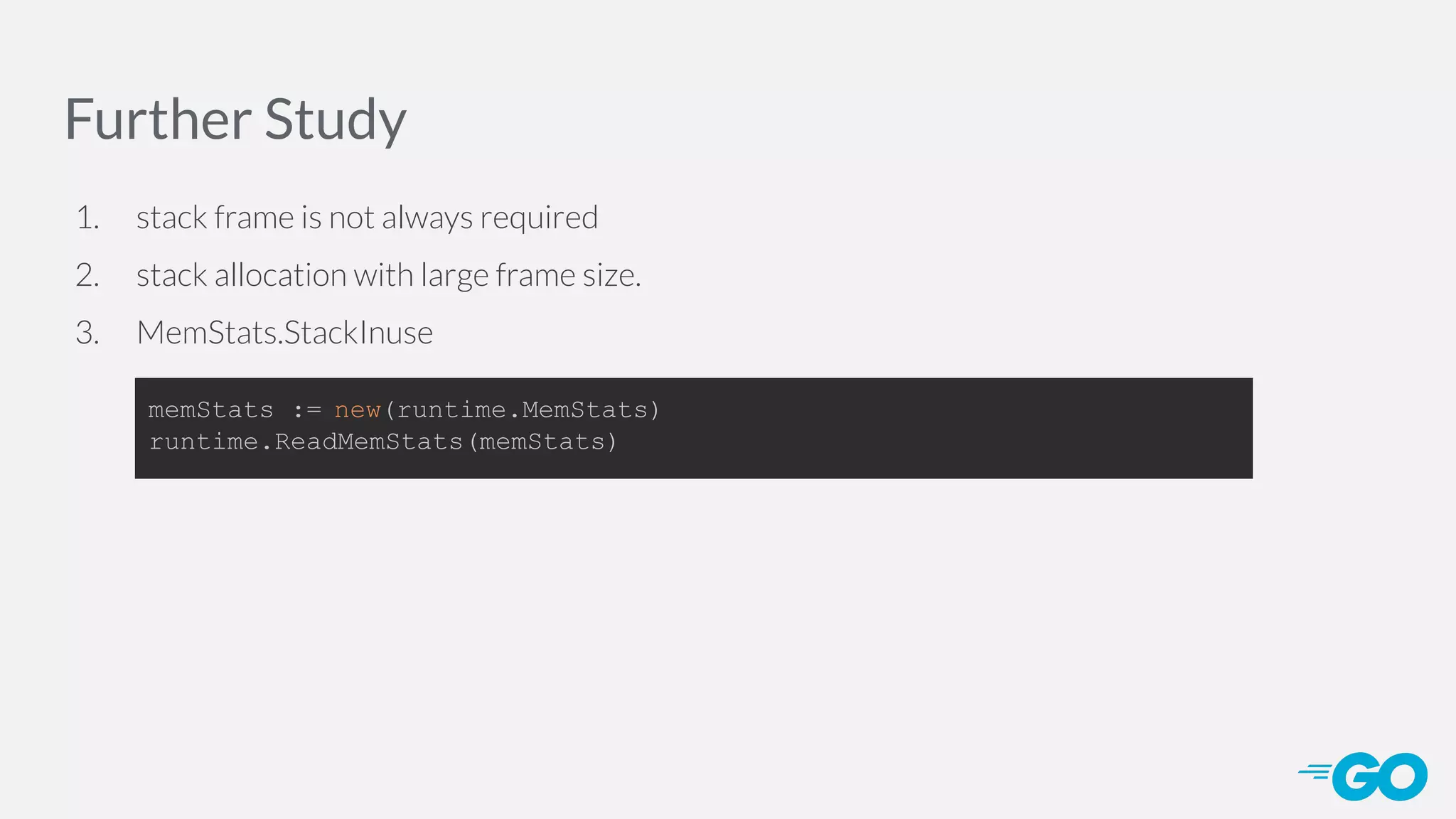The document discusses Goroutine stacks and stack allocation in Go. It explains that each Goroutine has an associated stack that starts small (128 bytes) but can grow as needed by allocating heap memory. There are two stacks - a system stack for M's and a user stack for Goroutines. The user stack uses a free list allocation scheme to efficiently allocate and free fixed-size stacks (e.g. 2KB, 4KB, 8KB). Stack growth is achieved by adjusting pointers when the stack size is exceeded.

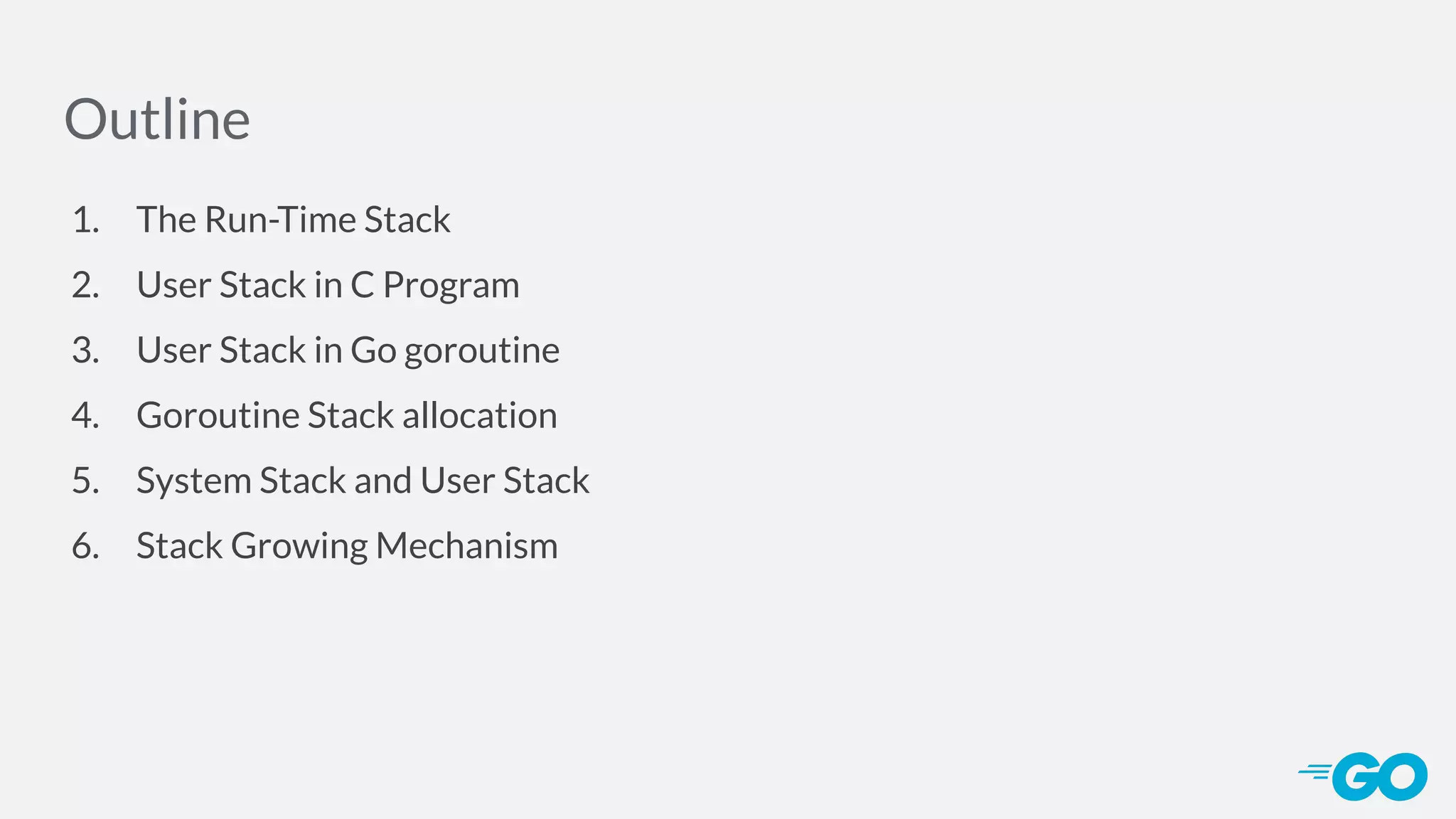

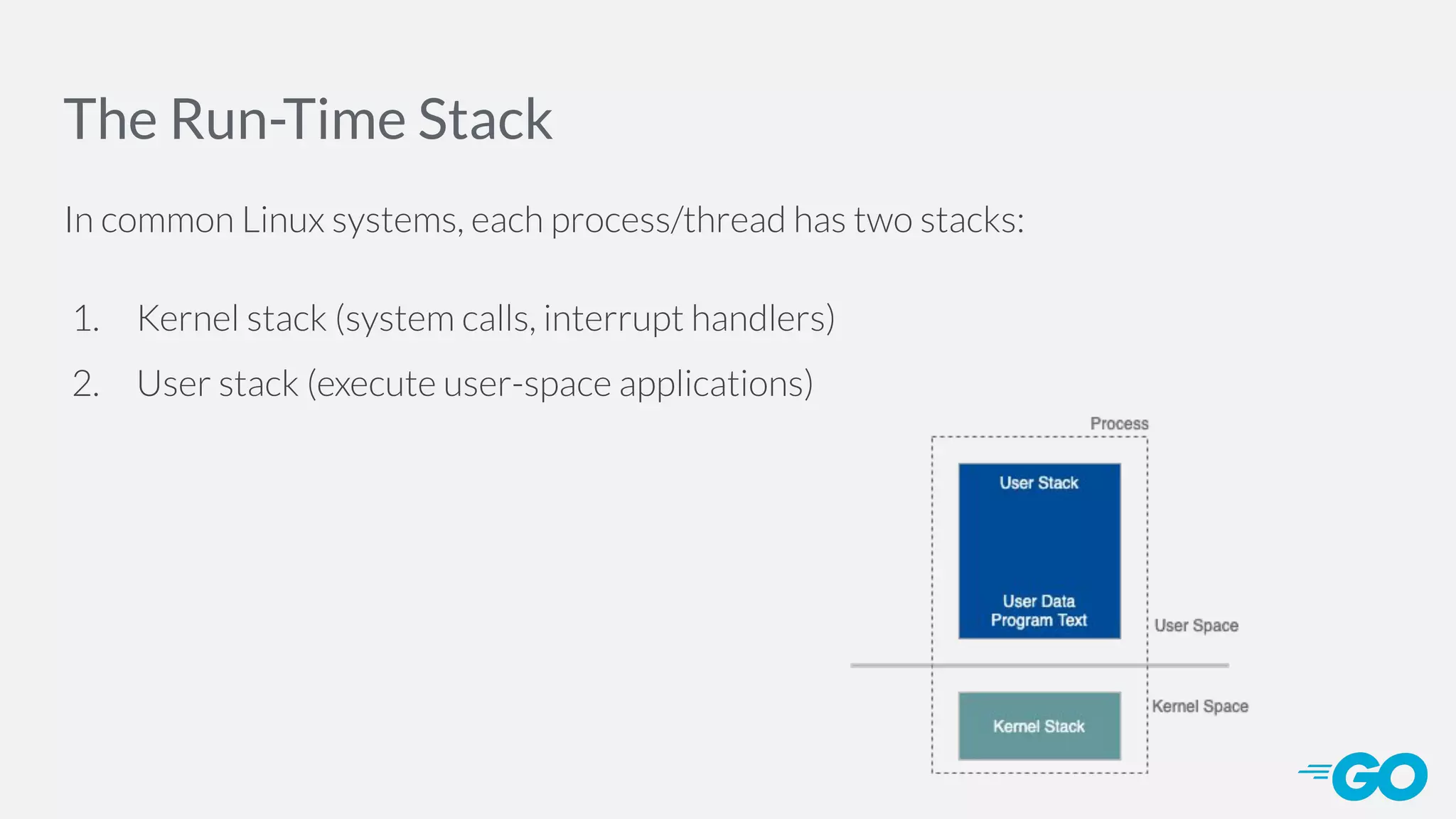
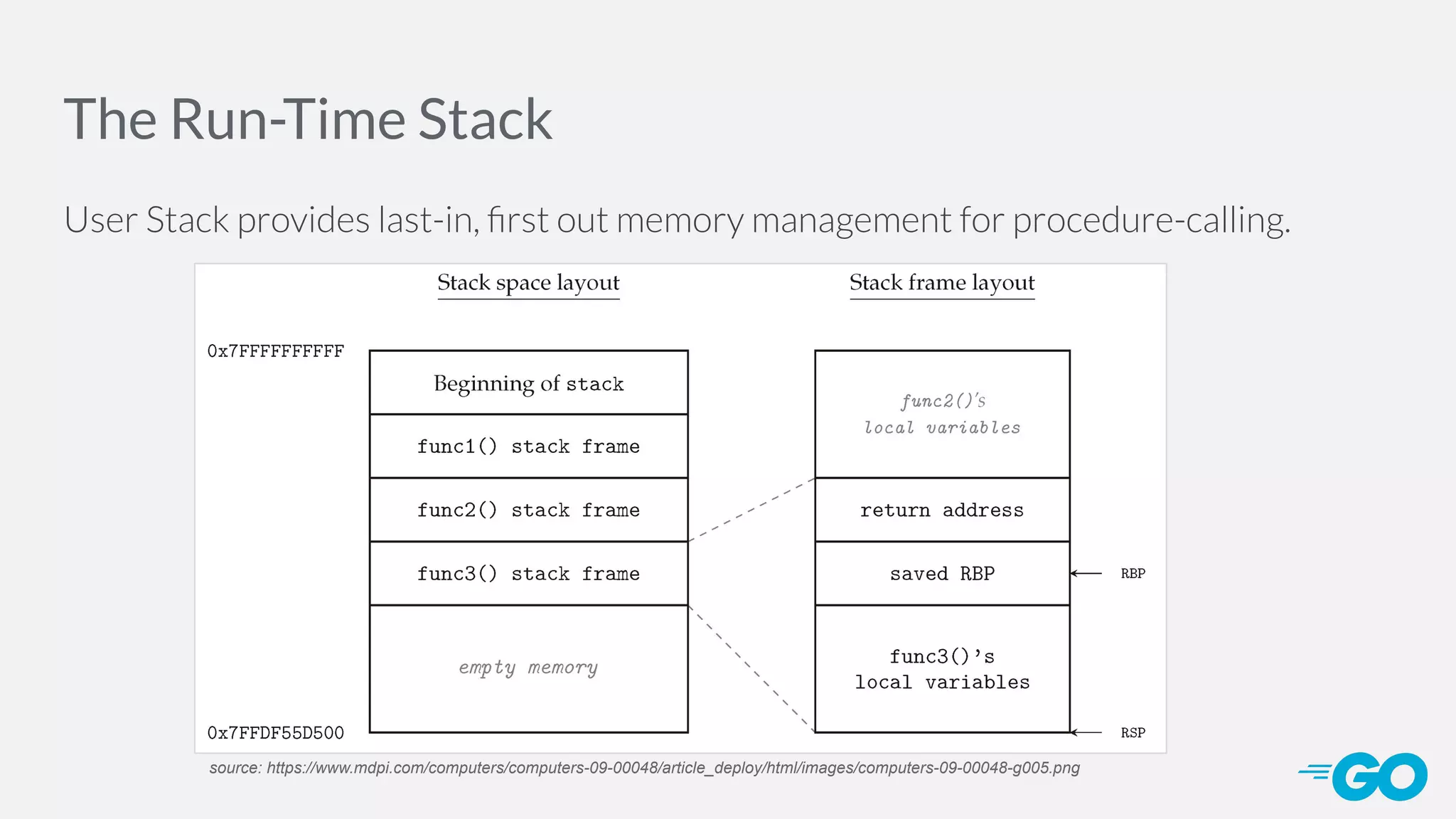

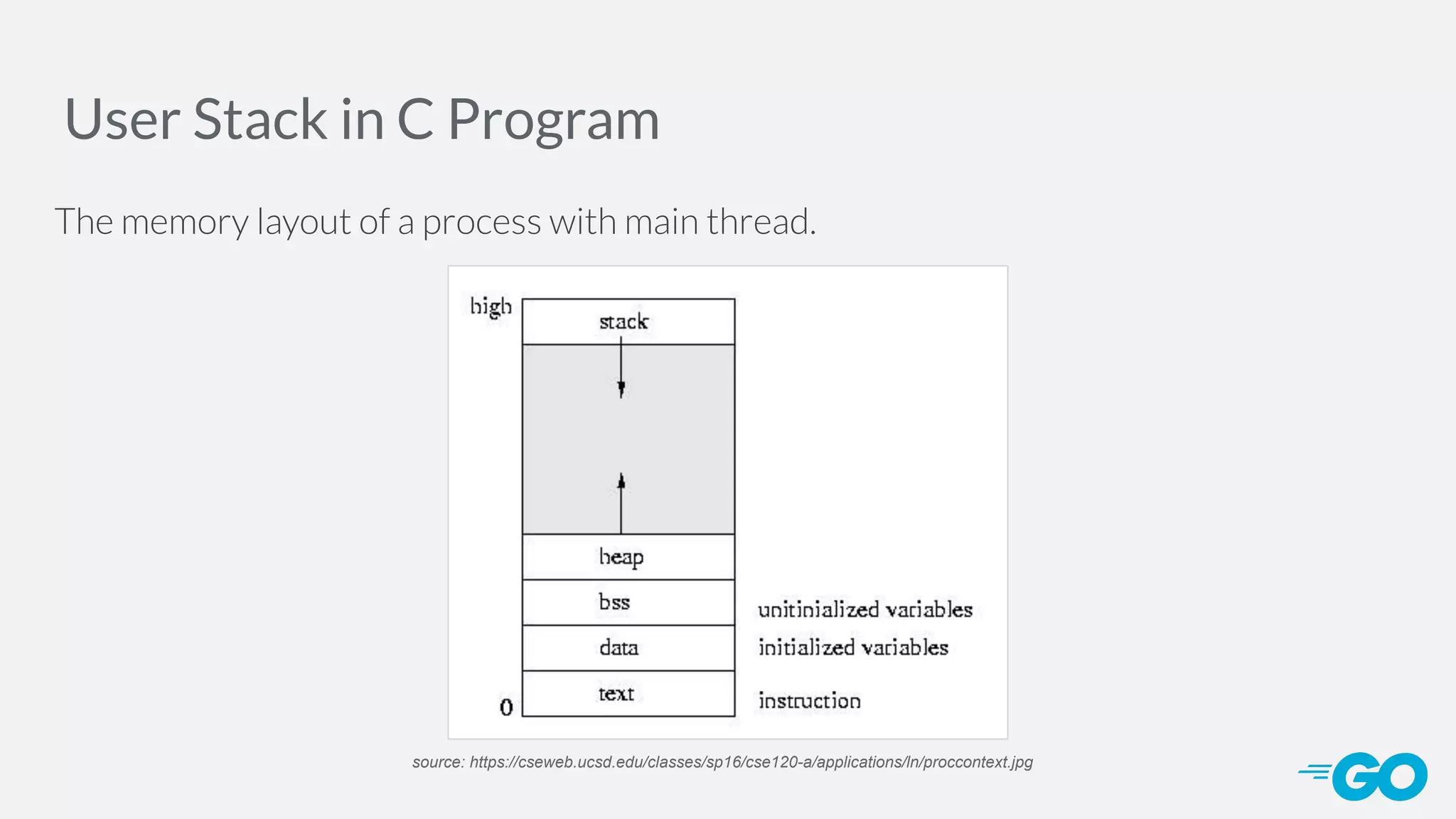
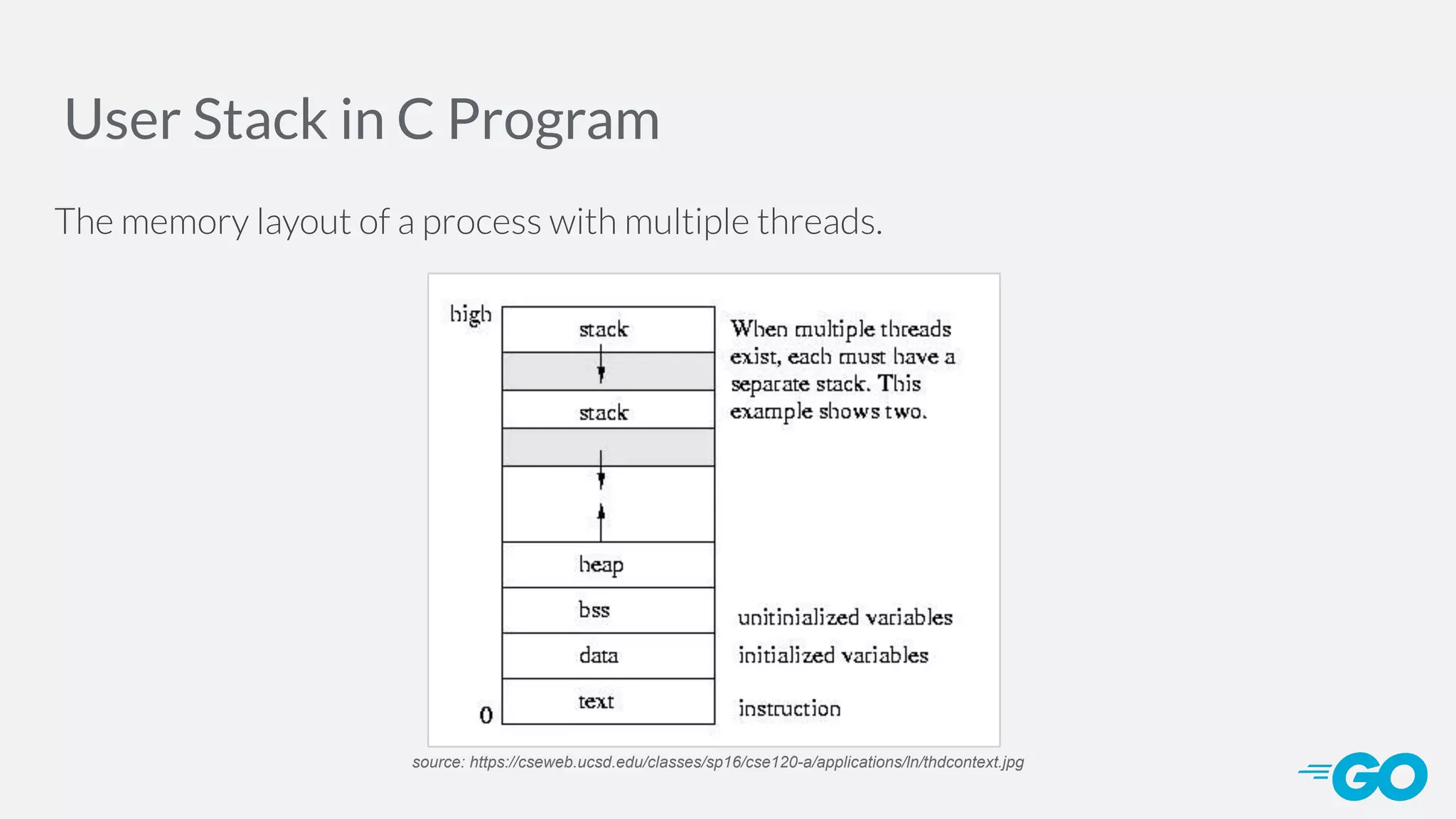
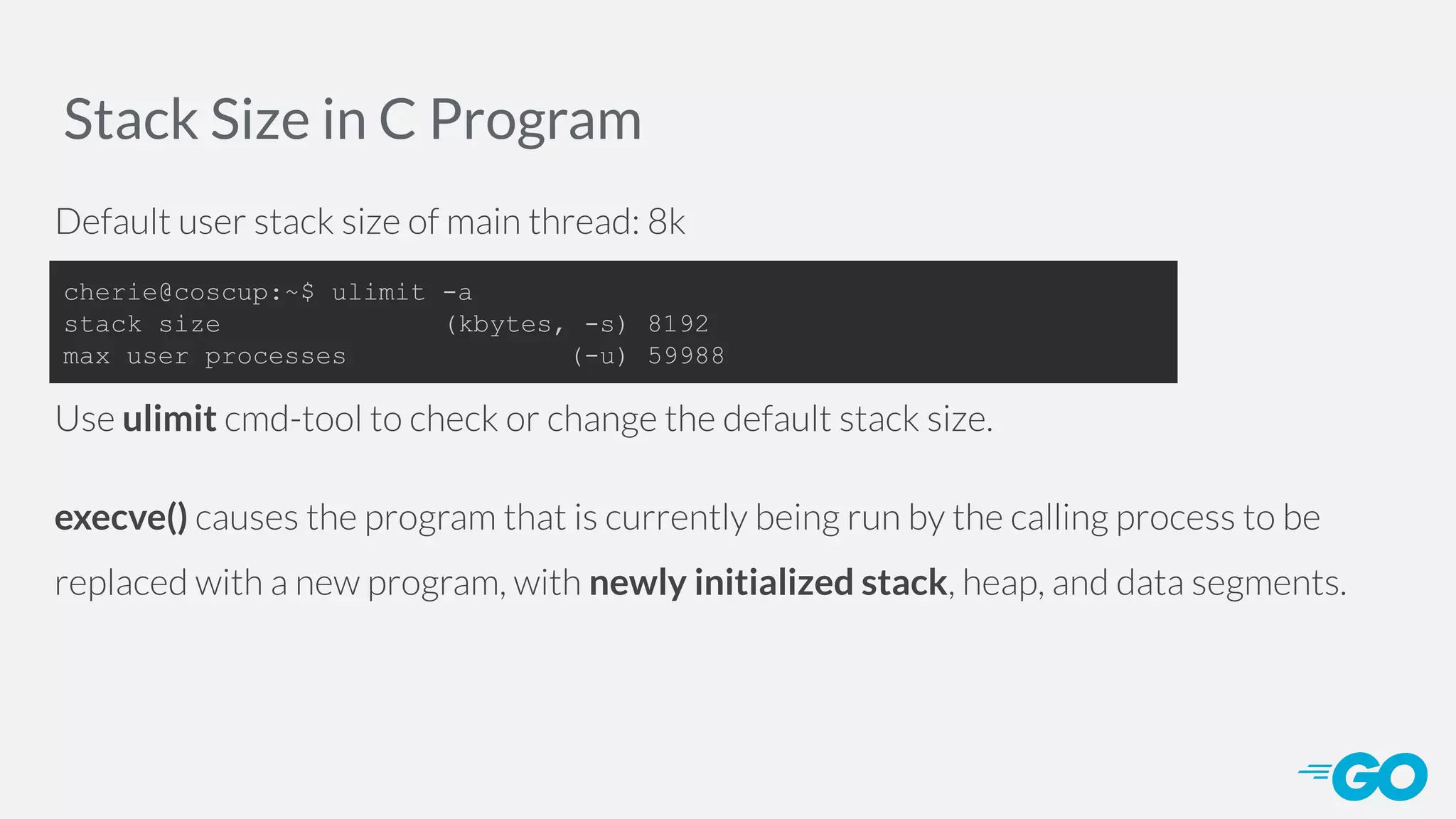
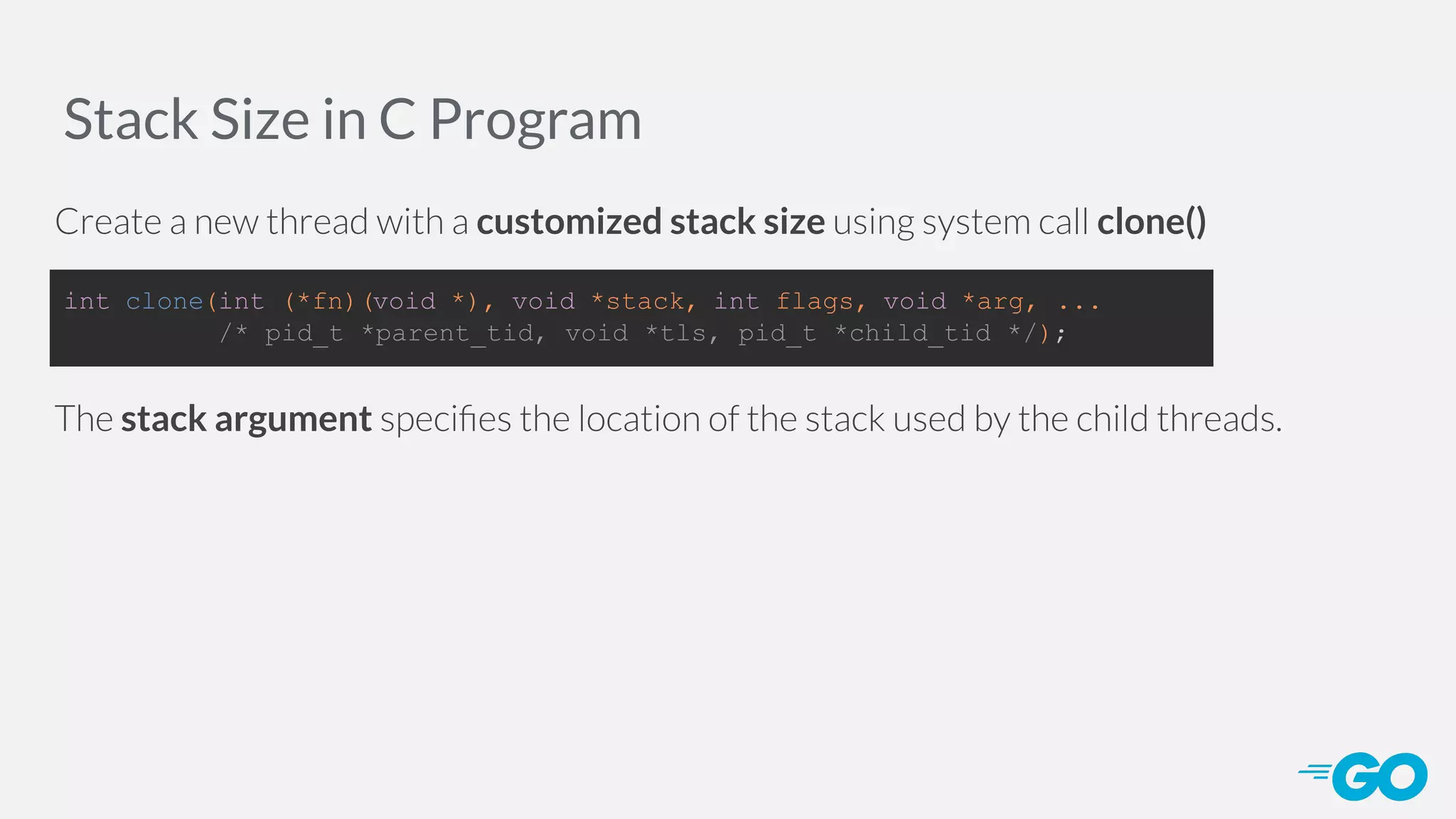


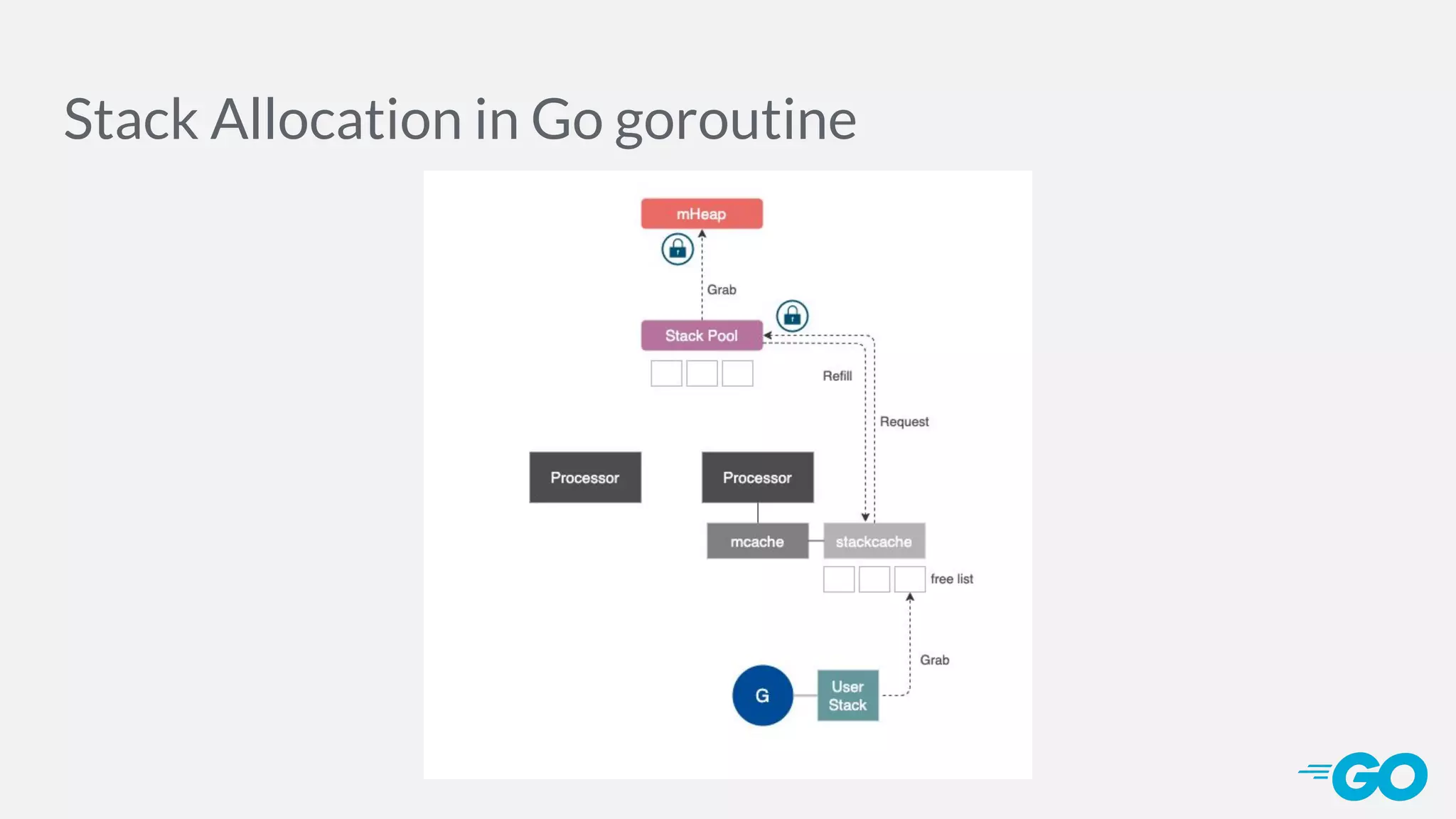
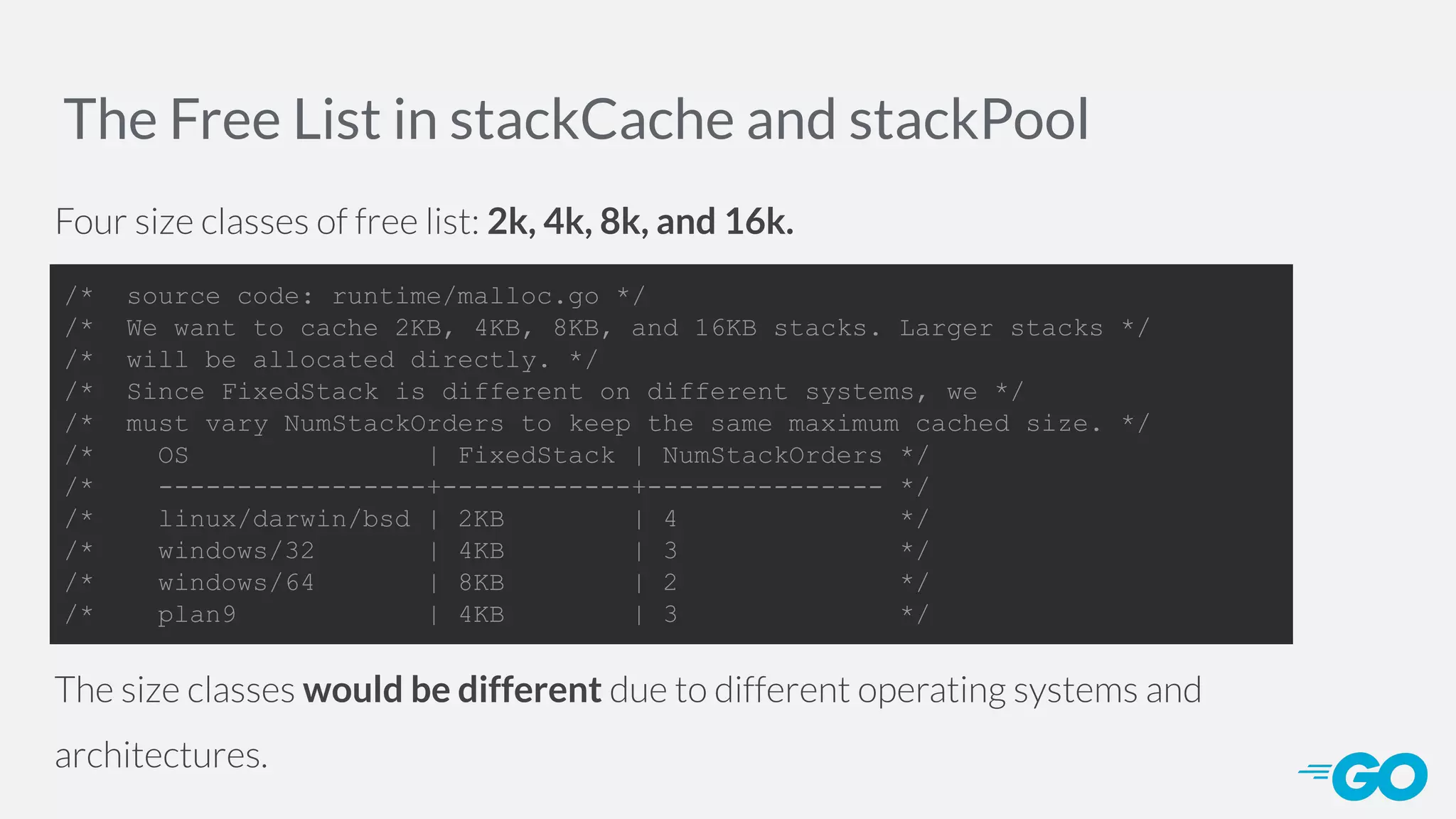
![The Free List in stackCache and stackPool Considering the cache line of each architecture, a cache line padding is added to item structure for performance optimization. /* Global pool of spans that have free stacks. */ /* Stacks are assigned an order according to size. */ /* There is a free list for each order. */ var stackpool [_NumStackOrders]struct { item stackpoolItem _ [cpu.CacheLinePadSize - unsafe.Sizeof(stackpoolItem{})%cpu.CacheLinePadSize]byte }](https://image.slidesharecdn.com/2020-coscup-go-200804060420/75/Goroutine-stack-and-local-variable-allocation-in-Go-15-2048.jpg)

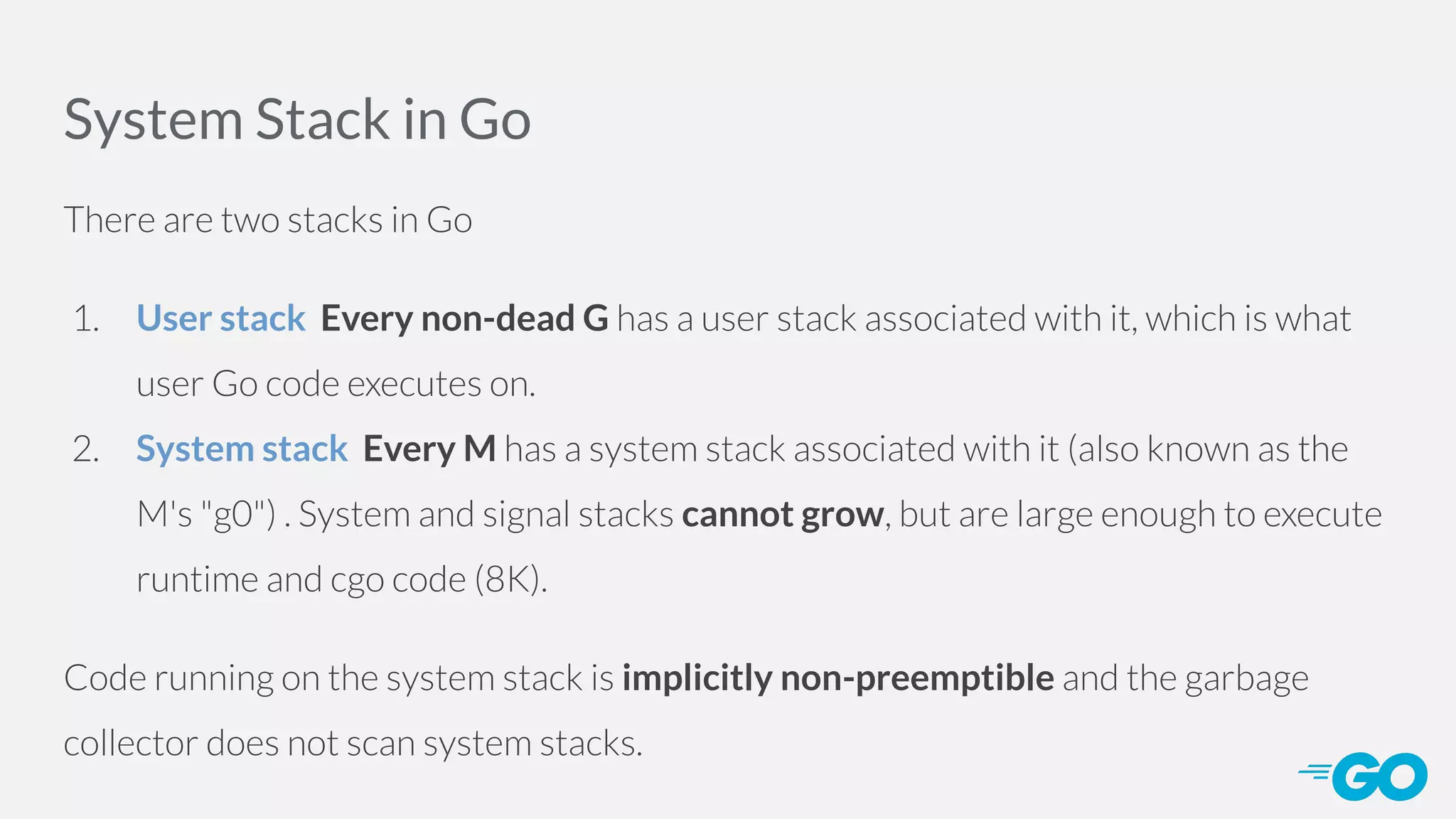
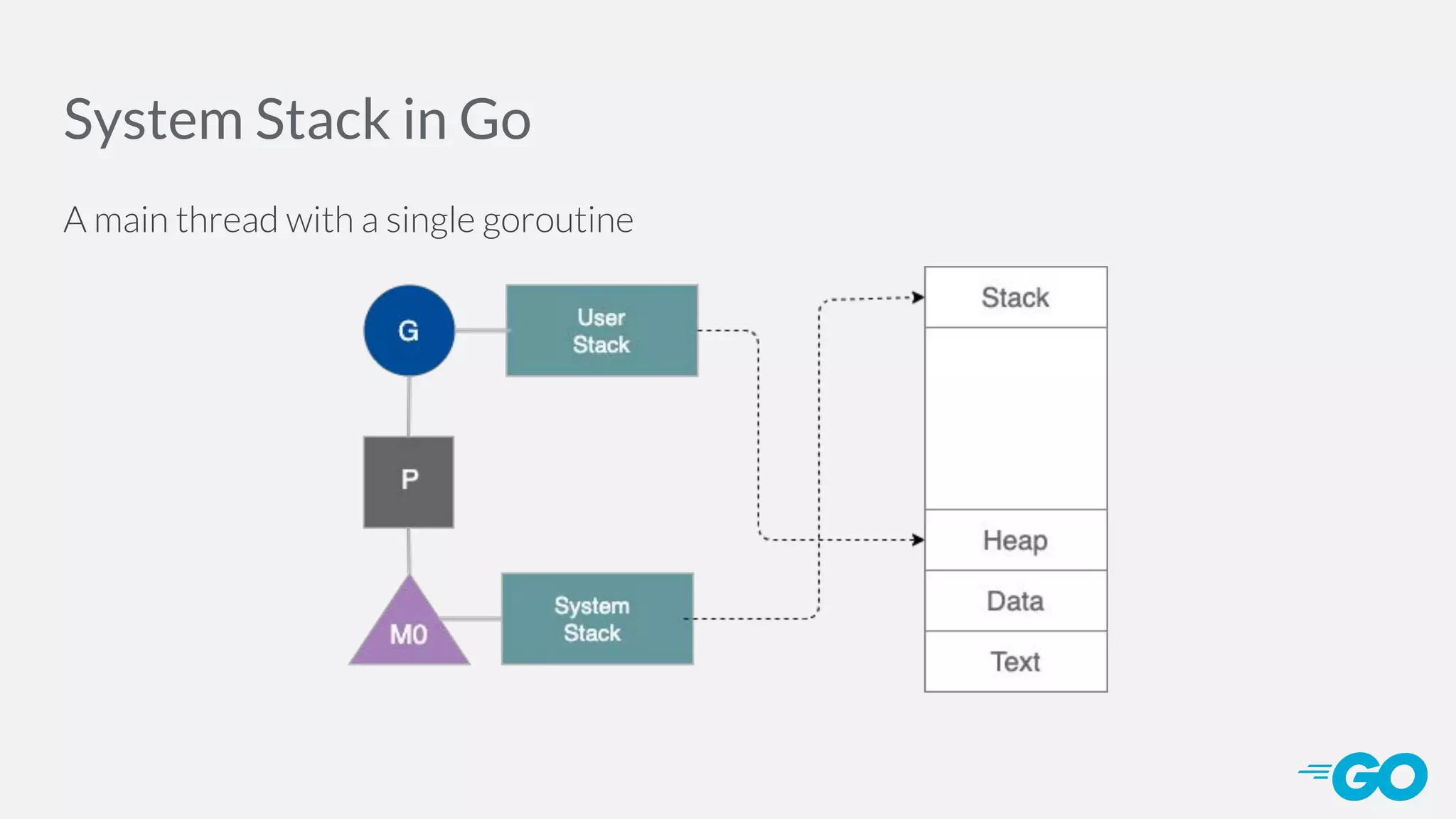


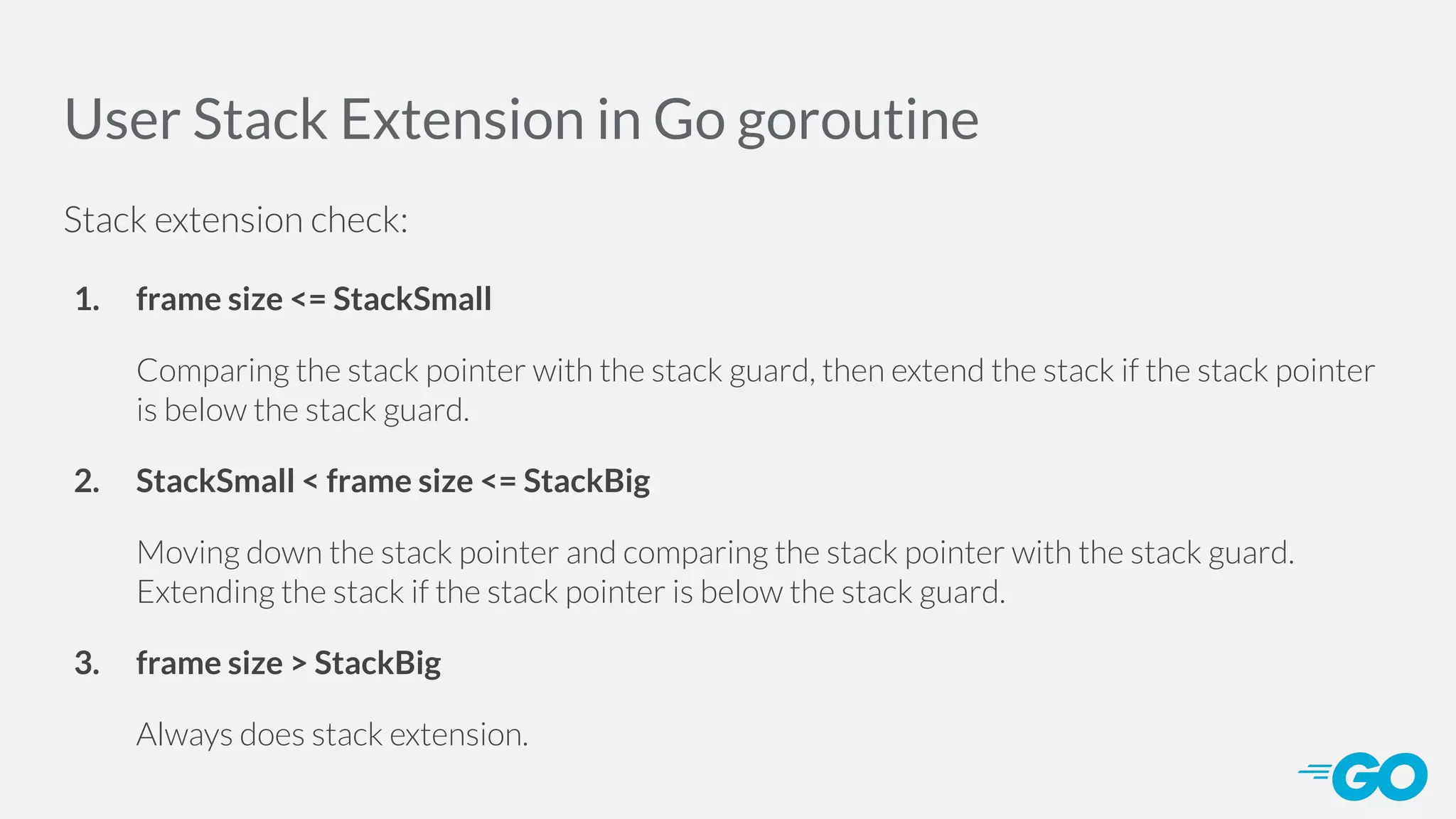

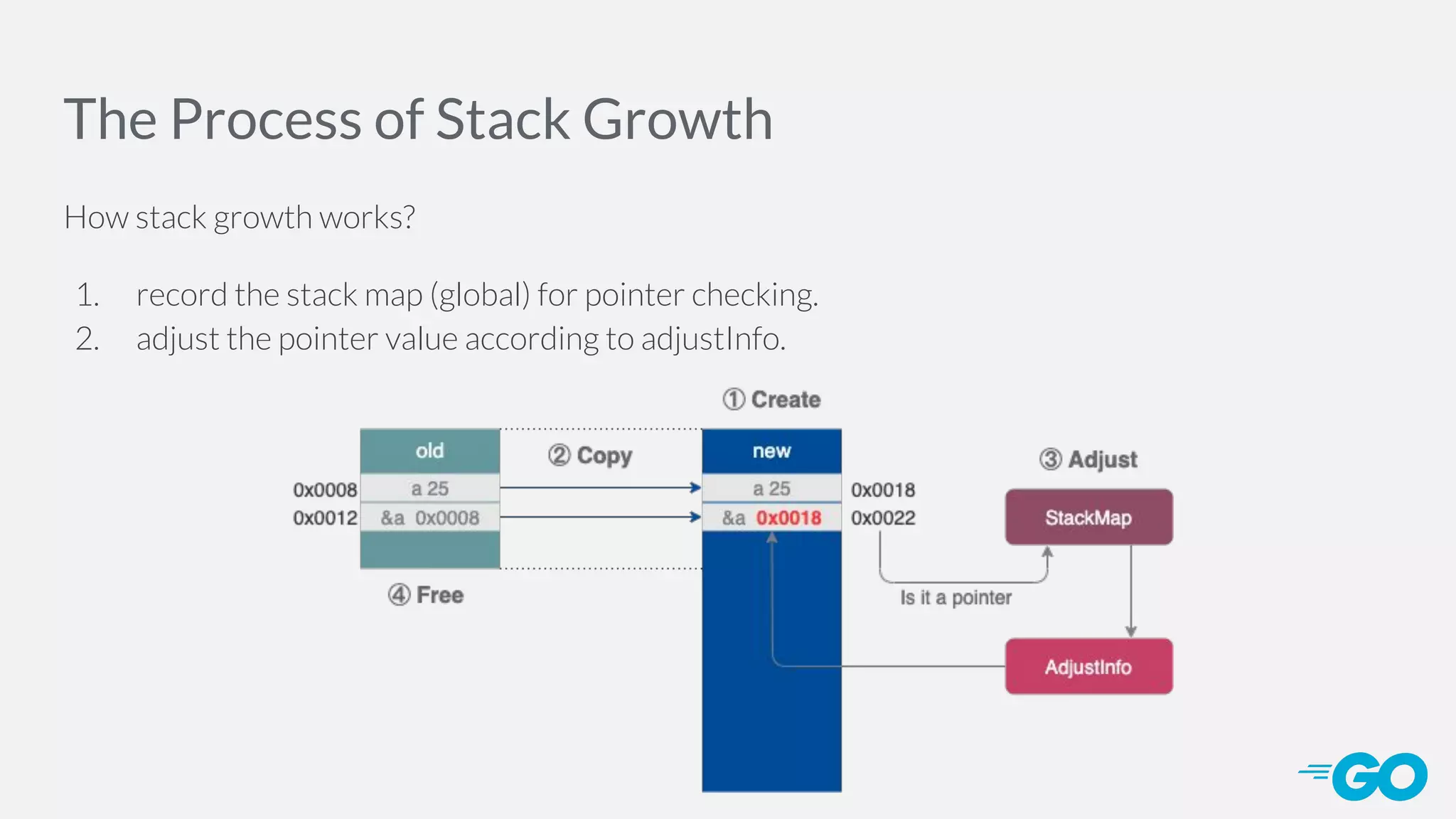

![Stack Overflow package main const ( size = 2048 maxDepth = 5000000 ) func bigFrame(args [size]uint64, depth int) { if depth < maxDepth { bigFrame(args, depth+1) } } func main() { var args [size]uint64 bigFrame(args, 0) }](https://image.slidesharecdn.com/2020-coscup-go-200804060420/75/Goroutine-stack-and-local-variable-allocation-in-Go-25-2048.jpg)
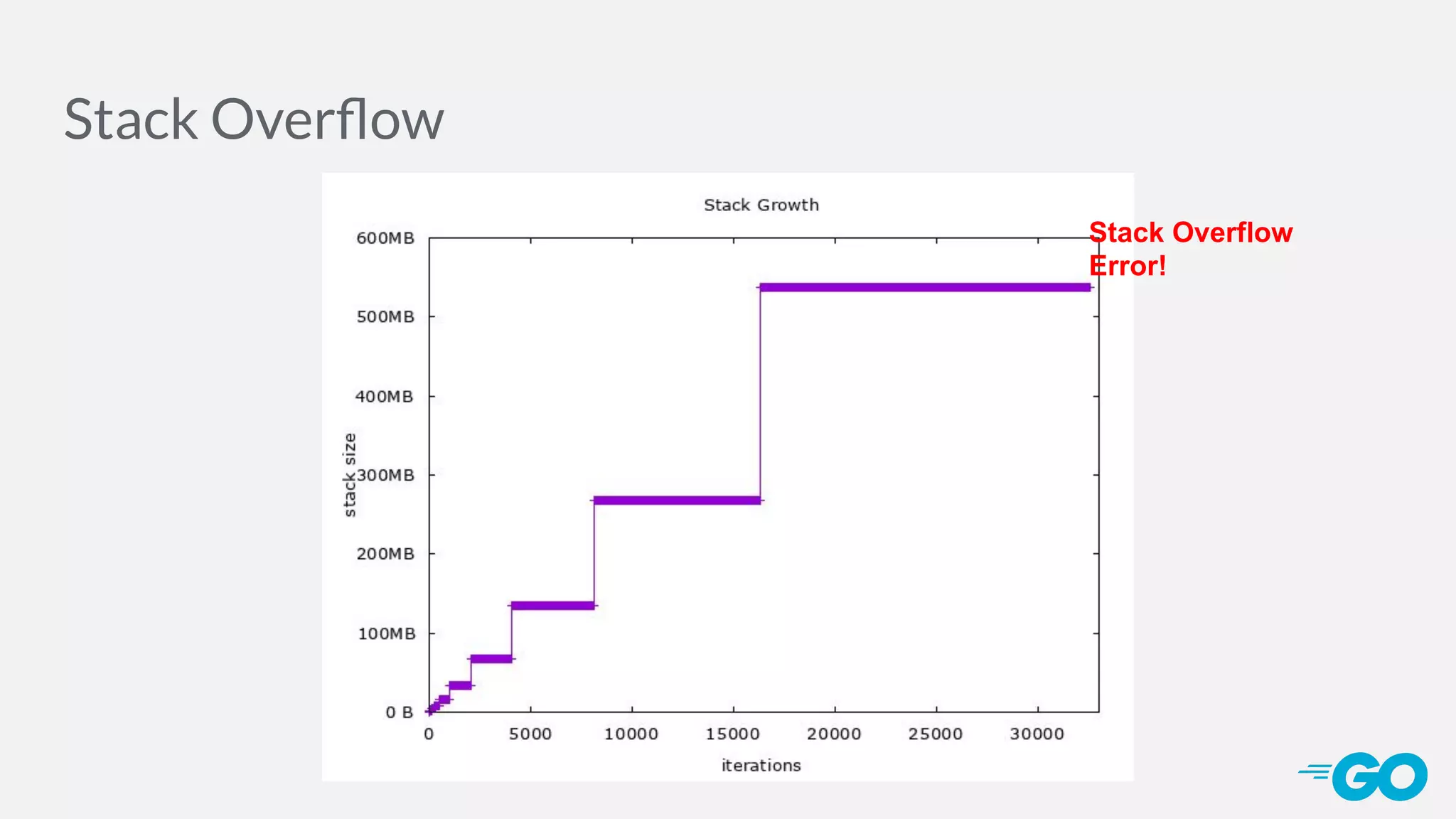
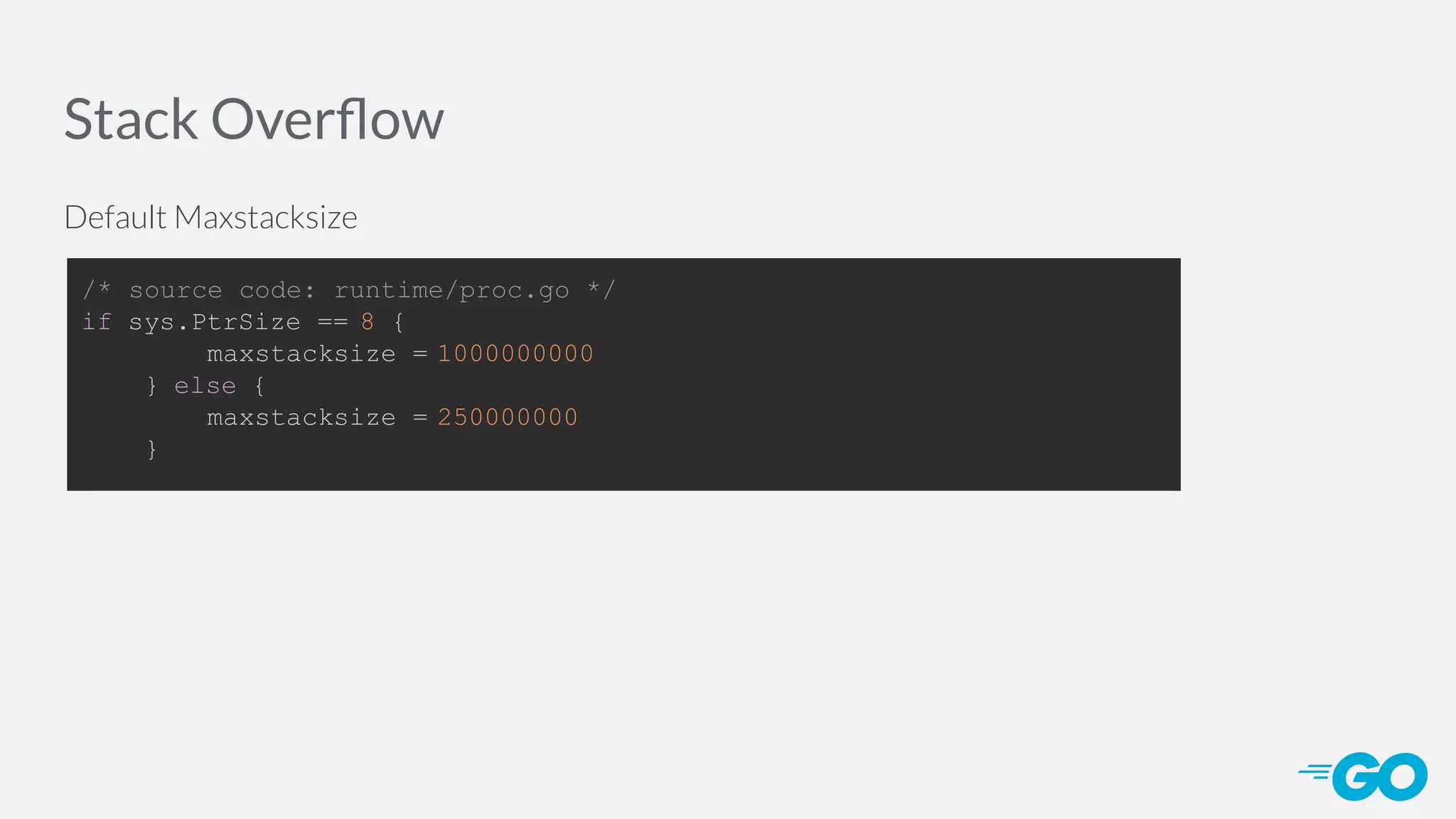
![Goroutine Initialization with > 2k function args package main /* change arrSize to 260 and check the result */ const arrSize = 4 var c = make(chan bool) func bigArray(arr [arrSize]uint64) { var sum uint64 = 1 for i := 0; i < arrSize; i++ { sum = sum + arr[i] } c <- true } func main() { var arr [arrSize]uint64 go bigArray(arr) <-c }](https://image.slidesharecdn.com/2020-coscup-go-200804060420/75/Goroutine-stack-and-local-variable-allocation-in-Go-28-2048.jpg)
